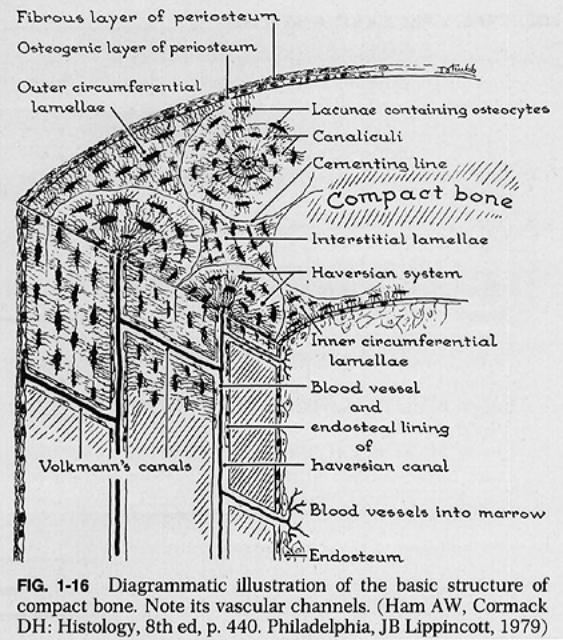Bone remodeling occurs throughout life. It is estimated that in the first year of life 80-100% of bone is replaced by the remodeling process. In adults, this slows to a rate of 1-5% per year. The remodeling process is a dynamic process that responds to outside forces such as load demands and muscular attachments. In 1868, Julius Wolf first described the process by which bone can adapt its internal structure and external form to accommodate specific load demands. The process would later be called Wolf’s Law. In regions where load increases, the remodeling process vigorously lays down new bone to more effectively carry the load. In regions where load decreases, the bone is resorbed. These processes in conjunction can affect the overall shape of the bone to its most efficient configuration capable of meeting demands. To this day little is understood about the mechanisms that drive Wolf’s Law, but the remodeling process has been clearly elucidated.
Remodeling follows a very specific sequence of events that invoke the bone multicellular unit (BMU). The process begins with resorption as a sheet of osteoclasts form the head of a “cutting cone” (Figure 21) that borrows a hole into formed bone. Directly behind this, new blood vessels infiltrate the new space. This allows the immigration of osteoblasts that immediately begin replacing the dissolved bone. This process ultimately results in the formation of a new osteon.
Figure 21:
Cutting Cone. Note the leading osteoclasts followed by a vascular channel with peripheral osteocytes that have begun to lay down new bone.

The osteon (figure 22), also known as the Haversian System, was first described in the 17th century by Clopton Havers. The osteon is a long narrow tube that is 200 micrometers in diameter of variable length. Centrally, the osteon consists of a small channel that is 50-100 micrometers wide where one or two blood vessels, small nerve, and lymphatic channels reside. Layers of collagen and bone radiate from this central region in four to twenty concentric circles. Embedded within the layers are osteoblasts that have become encased in bony lacunae thereafter called osteocytes. The osteocytes lose their bone formation capacity and take up the role of architectural maintenance, which is thought to last 25 years. The osteocytes communicate with each other thru small channels called canaliculi. The outer limit of the osteon is encased in a special layer called a cement line. Osteons communicate with each other through the cement lines with lateral passages called Volmann’s canals. Ultimately this forms a complex interconnected system with a maximized volume of bone surface area and strength. This continuous process of replacement is important as a means of constantly repairing the strain damage done to the bone at the cement line interfaces that occur as a consequence of everyday loading. See complete diagram in Figure 23.
Figure 22

Figure 23


